The Diamond T: A Gem of a Truck
By Natalie Thoreau Pohlman 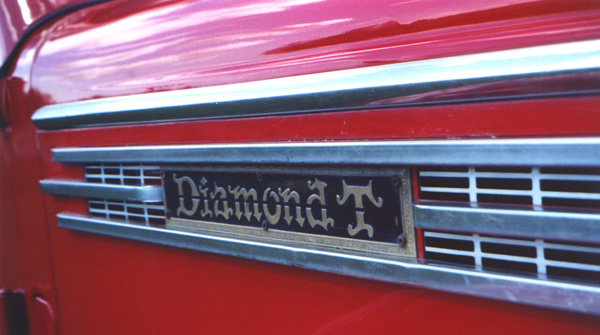
A Diamond T is a vintage truck enthusiast’s best friend.
The now-defunct automaker revolutionized the art of making trucks with style and driver comfort, says Gary Nielsen of Willmar, MN. He stumbled upon the rare brand in 2003 and is on his third such vehicle, a 1948 Diamond T model 201 truck with a 237 cubic inch engine. “They were called the Cadillac of trucks. Their style was unique,” Nielsen said of Diamond T’s big, heavy, construction and over-the-road trucks that evolved into lighter utilitarian vehicles made under the motto, “A truck doesn’t have to be homely.”
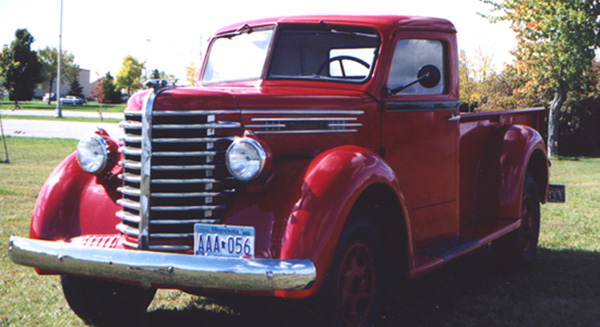
The Diamond T’s appeal comes from classic styling, advanced features, and high resale value. Those make the brand a sought-after commodity among fans across the nation, some of whom are involved in an online group called Diamond T Classics. According to articles on the site, Diamond T Motor Car Company was started in Chicago by the son of a shoemaker. Diamond was chosen to designate quality and T referred to the family’s surname, Tilt. Diamond T built roadster-type, four-cylinder engine passenger cars from 1905 to 1910 and then delved into the truck business. It went on to build tow trucks, dump trucks, delivery vans, buses, fire engines, heavy-duty commercial vehicles, and class B trucks for the Army during World War I. Diamond T forged an exclusive partnership with Hercules for L-head engines with seven main bearing crankshafts cast from the strongest of steel, and used Cummins diesel engines for its larger vehicles.
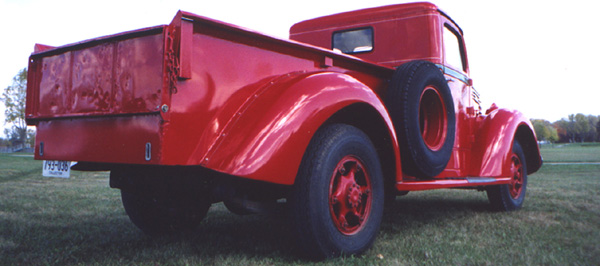
Truck appearances weren’t a consideration until Tilt turned heavy, awkward, utilitarian trucks into vehicles with looks that owners could appreciate. For the first time, trucks were produced with attention to paint detail, driver comfort and overall styling. In 1927 and 1928, Diamond T’s trucks went from heavy-duty, slow high-tonnage units to lighter and much faster models with more modern designs: six-cylinder engines, four-wheel hydraulic brakes and fully enclosed cabs.
Diamond T trucks and vans were assembled units made with Timken and Clark axles, Warner transmissions, McLaughlin Body cabs, Maremont bodies and Hercules engines. The trucks were no longer advertised as “The Nations Freight Car” but as “The Handsomest Truck in America,” and styling became an important selling point. That helped Diamond T sell 3,590 trucks to American buyers in 1929, 2,250 in 1932 and 8,750 in 1936.
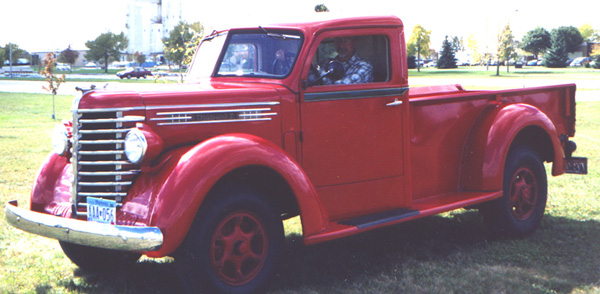
Nielsen’s example is a 1948 Diamond T model 201 truck dressed in fire-engine red with green stripes, spare tire and tool box on the outer passenger side, hood that opens in halves from the sides of the vehicle, and clean interior styling. The 201 was introduced in 1938 and an estimated 7,000 were built through 1949. Acquiring his Diamond T “was really an accidental deal,” Nielsen said. By chance, he struck up a conversation with someone who knew about an antique farm truck of an unknown make for sale. The seller already had a buyer lined up, but he failed to show. “I had the unusual opportunity to find a truck that was better than described,” Nielsen said of the Diamond T’s condition when he first saw it in July 2003. Originally from Waconia, MN, the truck didn’t run and was in the midst of a restoration by an owner who didn’t know much about Diamond Ts ~ other than it was hard to get parts. Nielsen acquired the truck in exchange for an antique tractor and some cash. It needed a fuel pump because the pump is located so close to the manifold, causing the truck to vapor lock.
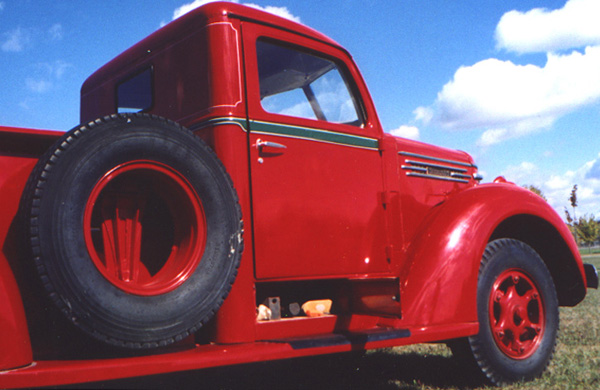
“My knowledge of the Diamond T was zero when I brought the truck home. I knew nothing of its history, was unaware of what model I had bought, and had no clue of it value. One of my first thoughts was, ‘Where will I get parts for this?’ I did discover the Diamond T Classics Web site in my search, and suddenly I realized there was some hope of learning more about the history and found that some information was available to help me. The information about the parts to be found at NAPA stores has been a great help, since my local store is very accommodating,” Nielsen said. “Basically, a little bit of tinkering and I had it going.”
The truck is “very authentic,” from its set of optional hubcaps to the approximately 24,000 miles on the odometer. It was repainted close to its original hue. “Red was the most common color, and the green stripe was pretty traditional,” said Nielsen. Drivers of trucks, fire engines and fuel tankers are the biggest admirers, and the most common question Nielsen fields is, “Who made it?” That’s usually followed up by a guess: “International?”
“This truck draws a great deal of attention ... high-fives and waves. That’s really the fun part of driving it,” he said. “I had a lady from Iowa chase me two miles through three stores (across Willmar) to compliment me on the truck and share that she sold one like it when her husband died and has been sorry ever since. My fellow car club members have been very complimentary. The low flat roofline of the cab is so unique that the truck stands out among the crowd.”
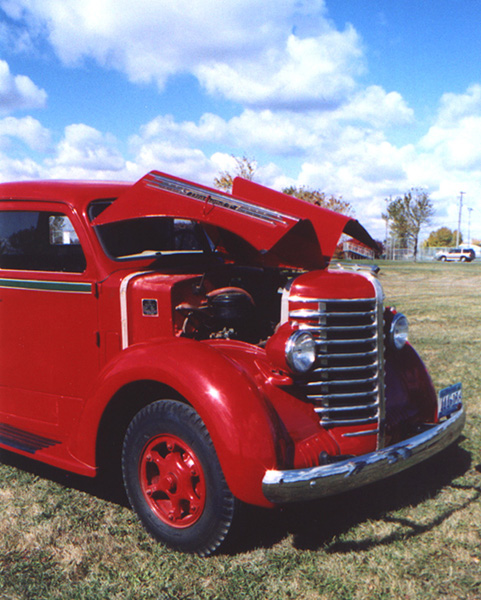
Nielsen said he’s driven Diamond Ts for a couple thousand miles, mostly to car meets and around Willmar. About the only trick is double-clutching, meaning monitoring and gauging speed is important when shifting. “It’s really a 40 mph truck” because the engine ~ rated for 91 horsepower at 3,200 rpm ~ turns so slowly, he said. “One of the things I think is really unusual is the low cab height ... and very low windshield.” The driver has to lean down to see overhanging traffic lights.
Nielsen put almost as many miles on his other vehicles chasing down four opportunities to purchase more Diamond Ts ~ so far, he’s missed two. Nielsen bought a 1947 model 509 semi with a grain box, the same style as his 201 but bigger, from someone on the Diamond T Classics site last March. After getting it running, Nielsen sold it five months later to a buyer in Washington State through auction site eBay. He also bought and sold a 1948 model 306 last summer through contacts with Willmar Car Club and eBay members. Both vehicles had cranks so they could be started by hand.
“It’s interesting ~ ‘What are these worth?’ is a really hard question because it all depends on condition,” Nielsen said. Diamond T trucks range from $15,000 to $50,000 in resale value.
White purchased Diamond T in 1958, introduced the Diamond Reo Truck Division in 1967 and sold Diamond Reo to F.L. Cappaert in 1971. But the Diamond T name lives on among collectors who still appreciate the maker’s ahead-of-its-time designs: In 1998, a restored 1936 Diamond T model 412-DR won Heavy Duty Trucking magazine’s “Oldest Working Truck Contest” in honor of the publication’s centennial. At that time, the 60-plus-year-old vehicle with a 404 cubic inch engine still hauled a van trailer across the Midwest for a packaging company.
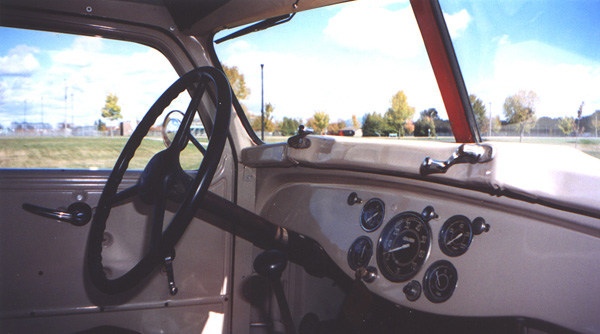
For more information on Diamond Ts, visit www.DiamondTClassics.com.